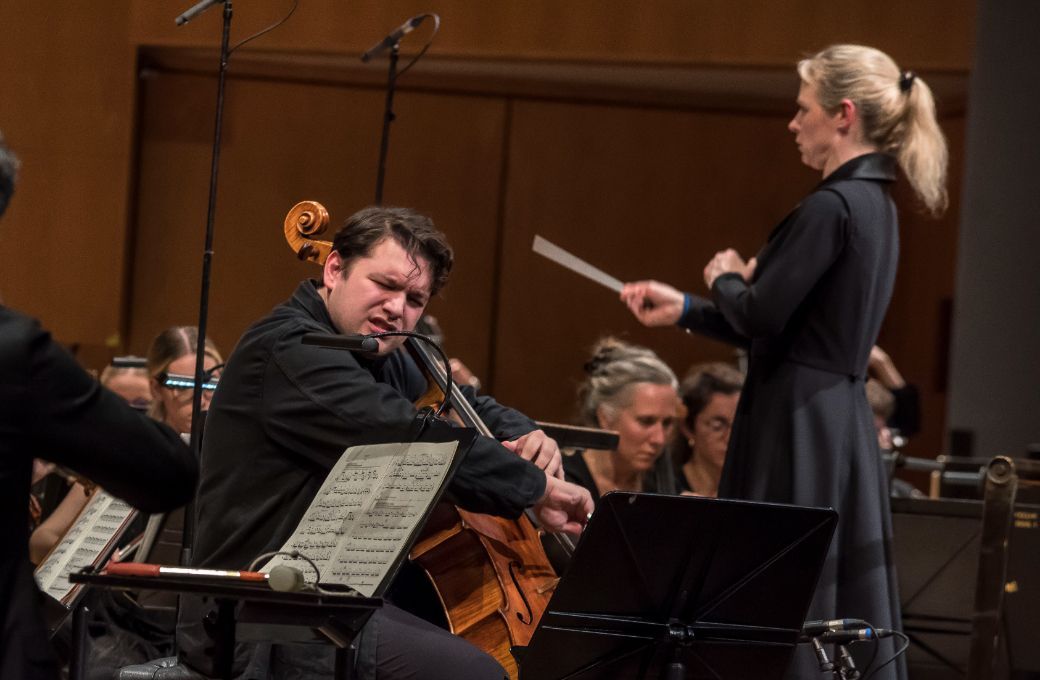This season’s BBC Philharmonic Orchestra programmes are carefully built around new music, with almost every programme featuring a work which is in some way new. Another common strand throughout the season is the titling of individual concerts. This evening’s title, ‘Lost Coast’, after the UK premiere of Gabriella Smith’s cello concerto by the same name, showed just how seriously the orchestra is taking new music.

Conducted by Gemma New, the evening’s opening work will also have been new to many in the sizeable audience, despite being over 80 years old. Polish composer and violinist Grażyna Bacewicz wrote her Overture in 1943 during a period of relatively reduced output (her catalogue otherwise including over 200 scores). The six-minute work sees two allegro passages flanking a more reflective central passage. The outer sections positively fizzed off the stage, with intricate woodwind solos (notably for bass clarinet) sitting alongside lean and muscular string playing. The effervescent, festive atmosphere seems to herald some grand event, making it a worthy prelude to the remainder of the programme.
Gabriella Smith’s Lost Coast, receiving its UK premiere, was written in 2023 by the then 32-year-old in response to a prolonged hiking trail along the Northern Californian coast, and her reflections on the fragility of the natural world amid the climate crisis. In simple three-movement form, the sound world is one of pulsating energy, minimalist repeated rhythms and figures and moments of distressing cacophony. Soloist Gabriel Cabezas began the work with a long crescendo of a humming tremolando, with soloist and orchestra creating harmonics which fluttered in and out of focus like the sound of a didgeridoo. There was great inventiveness in the solo part for its use of slapping of the fingerboard, treating the instrument almost as an extension of the percussion section, and the evocation of whale song. The tumultuous end to the movement hinted at Smith’s self-professed “grief, loss, rage and fear” she experiences in the face of climate change. In the finale, the addition of a cajon at the front of the stage propelled the music forward with rhythmic urgency, making for a unique and thrilling conclusion to this powerful work.
Sibelius’ Second Symphony, a guaranteed crowd-pleaser, was here given a low-fat, fresh reading from New which steered clear of sentimentality while always maintaining crystalline textural clarity. There was a clear arc of forward momentum throughout, and although this gave clear structure to the outer movements, the second movement felt oddly circumspect even in its most tumultuous paragraphs. There was great beauty to admire elsewhere, though, not least in the more sombre central parts of the third movement. After a heady transition into the finale, the music surged and buffeted like the waves evoked earlier by Smith. The coda held something in reserve until the very last, once again prioritising structure over melodrama, but with the last pages coloured by a richly golden glow in the brass sound.


